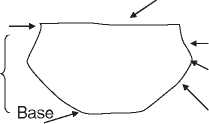Pottery has the potential for infinitely variable forms and artistic expressions created by human artisans. Unlike natural materials used as collected, the clay mixture from which the artisan makes pottery also is composed by him or her, again with a potential for infinite variation. Thus, pottery embodies a great deal of the human element, reflecting of multiple aspects of a society.
In many archaeological cultures, pottery fragments are an extremely abundant artifact type. These fragments, which are called ‘shards’ in British literature and ‘sherds’ or ‘potsherds’ in most US-based literature, offer a tremendous opportunity for data collection. It is not unusual for several thousand pottery sherds to be individually processed and recorded by analysts in a single project. These large quantities allow statistically valid conclusions. Furthermore, for those regions and eras in which pottery is ubiquitous, there is a constant resource for site comparisons.
The same factors that provide opportunities in pottery analysis also create pitfalls. The numbers and fragmentary condition of pottery sherds often require extensive labor and time for proper treatment and analysis. Usually some sort of sampling procedure must be imposed for any detailed analyses, and sampling always introduces new sets of considerations. Pottery found in fragments also raises questions about
Rim, ending in lip
Body
Vessel parts

Figure 1 Basic terminology for parts of a ceramic vessel.
Relationships to the numbers and types of whole vessels. Large numbers of finds must be somehow translated into descriptive classes that are meaningful to research. Most significantly, a multitude of potentially relevant factors must be considered in drawing conclusions from analytical data derived from pottery, due to pottery’s potential range of expression and the way that it is embedded within many cultural systems.




 World History
World History









